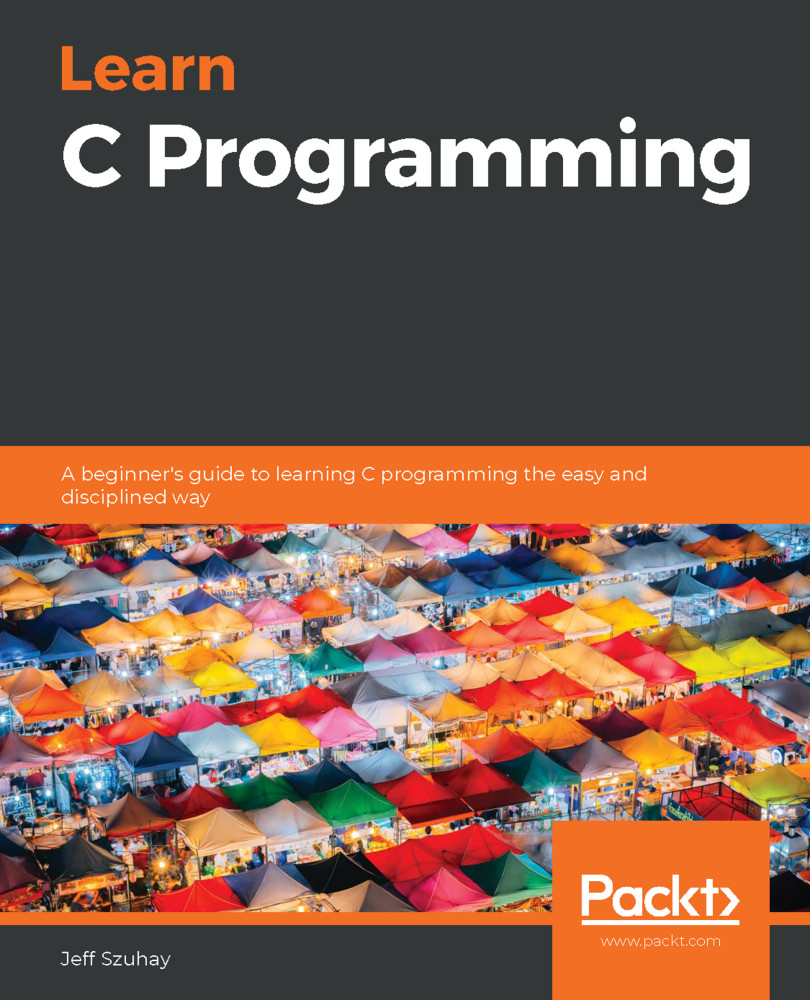A pointer is a variable that holds a value that is the location (or memory address) of another value. The pointer type not only identifies the variable identifier as a pointer but also specifies what kind of value will be accessed at the location held by the pointer.
It is essential to learn how to verbally differentiate the address of notation (a pointer value) versus the target of notation (the value found at the address that the pointer points to). In this chapter, we will strive to demystify C pointers.
Learning how to properly use pointers expands both the expressiveness of C programs as well as the range of problems that can be solved.
The following topics will be covered in this chapter:
- Dispelling some myths and addressing some truths about C pointers
- Understanding where values are stored and how they are accessed
- Declaring pointers and naming...



